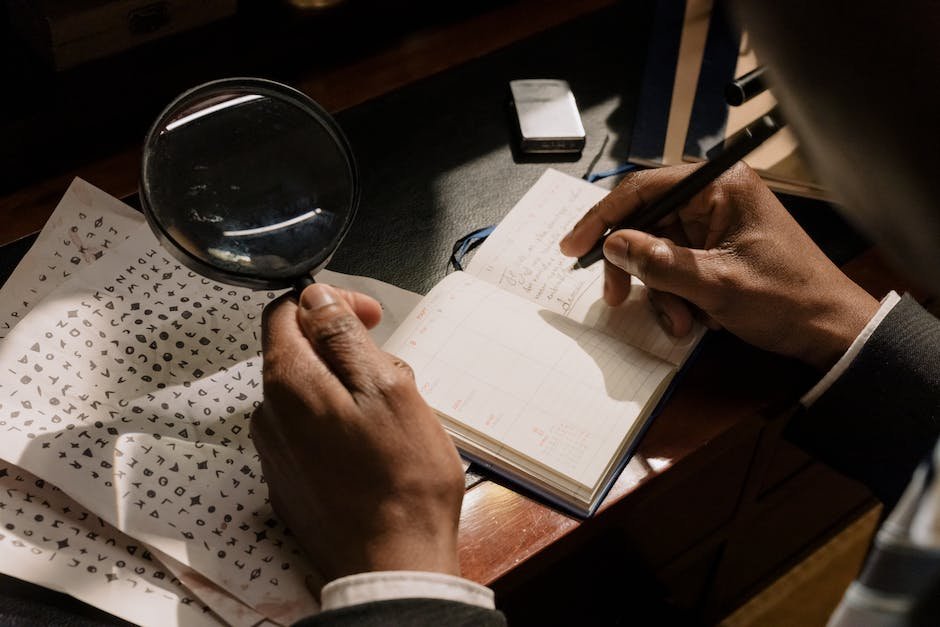Hidden deep within the tapestry of the natural world, bees navigate the intricacies of their society through a language far beyond our grasp – a language that transcends words, whispers, even dances. As we don our curious hats and venture into the realm of bee communication, we find ourselves captivated by the secret agents guiding their seemingly seamless interactions: pheromones. Emanating from every fiber of a bee’s being, these ethereal molecules dance within the air, carrying messages that orchestrate the delicate harmony of their highly organized colonies. In this perplexing realm, the role of pheromones emerges as a key, yet elusive, player, unraveling a story of communication strategies that surpasses our wildest imagination. Join us for a journey into the depths of bee society, where the magic of pheromones whispers secrets that have fascinated scientists and nature aficionados for generations.
Table of Contents
- The Invisible Chemical Messengers: Unraveling the World of Pheromones in Bee Communication
- Decoding Pheromone Signals: How Bees Communicate through Scent
- Navigating Through Precision: Pheromones and the Art of Foraging
- Harnessing the Power of Pheromones: Enhancing Beekeeping Practices
- Preserving the Pheromone Pathways: Sustainable Solutions for Bee Populations
- Q&A
- The Way Forward

The Invisible Chemical Messengers: Unraveling the World of Pheromones in Bee Communication
In the bustling world of bees, they possess a remarkable secret language. These tiny creatures communicate effortlessly through invisible chemical messengers known as pheromones. Pheromones are not only crucial for the survival and prosperity of bee colonies but also fascinating for scientists striving to unravel the secrets of their communication network.
One of the most well-known pheromones in the bee world is the queen bee pheromone. This potent scent, secreted by the queen herself, serves as a signal for unity and harmony. It tames the aggression among worker bees, ensures reproductive suppression, and maintains the bee social order. The queen’s pheromone is a true force of nature that guides the intricate harmony within the colony.
Parallel to the queen bee pheromone, worker bees release their own range of pheromones to communicate essential messages. For instance, alarm pheromones are released when a threat is detected, alerting the entire colony to take necessary defensive actions. Additionally, worker bees also employ pheromones to mark food sources, enabling efficient foraging and navigation within their vast territories. Unraveling the complex world of these invisible chemical messengers is like discovering a sophisticated symphony guiding the actions and survival of these remarkable creatures.

Decoding Pheromone Signals: How Bees Communicate through Scent
Bees are remarkable creatures not only for their ability to pollinate flowers and produce honey but also for their sophisticated communication system through scent. Pheromones play a crucial role in the way bees interact and convey information within their colonies. These chemical signals, emitted by various glands in their bodies, allow bees to coordinate their activities, defend their hive, and locate food sources.
The Types of Pheromones
- Queen Pheromone: Produced exclusively by the queen bee, this pheromone maintains social order within the colony and inhibits the development of other female bees’ reproductive systems.
- Alarm Pheromone: Released as a response to danger or disturbance, this pheromone alerts other bees to the presence of a threat.
- Foraging Pheromone: Used by worker bees to mark successful foraging spots, this scent guides other workers to abundant sources of nectar and pollen.
Through these different pheromones, bees can communicate complex information and organize their activities efficiently. By interpreting these scent signals, bees ensure the survival and productivity of their entire colony. Decoding their intricate language of pheromones is an ongoing area of research, revealing the remarkable intelligence of these tiny, buzzing creatures.

Navigating Through Precision: Pheromones and the Art of Foraging
As nature’s master navigators, ants have perfected the art of foraging through the precise use of pheromones. These chemical signals play a crucial role in guiding their colony members to abundant food sources or directing them back to their home nest. Pheromones are nature’s GPS, creating an intricate network of invisible trails that ants follow with unwavering accuracy.
The fascinating world of ant foraging begins with scout ants venturing out in search of resources. Once a scout finds a desirable food source, it quickly assesses the quality and quantity before heading back to the nest. But it’s not just the scout who returns; it carries a special gift back with it, leaving behind a trail of pheromones as breadcrumbs for its fellow workers to follow. These pheromone trails act as detailed maps, guiding the other ants directly to the food, bypassing any unnecessary detours.
Precise communication is essential in this intricate process. Ants can detect even the faintest traces of pheromones, allowing them to differentiate between fresher trails and older ones. The strongest scent marks will attract more workers, maximizing efficiency and ensuring that the colony fully exploits the available resources. By following simple rules laid out by these chemical messengers, ants can collectively navigate through complex environments and make optimal decisions as a unified force.

Harnessing the Power of Pheromones: Enhancing Beekeeping Practices
In the realm of beekeeping, mastering the art of harnessing the power of pheromones can truly revolutionize the way we approach this ancient craft. Pheromones, those potent chemical signals exchanged by bees, hold limitless potential in enhancing our understanding and manipulation of bee behavior. By tapping into this natural language of the hive, beekeepers can improve colony health, boost honey production, and even influence queen development.
One of the most remarkable applications of pheromones in beekeeping lies in their ability to maintain hive cohesion. The powerful queen pheromone emitted by the matriarch herself acts as a unifying force, ensuring harmony among the colony’s inhabitants. Harnessing this phenomenon, beekeepers can introduce artificially-produced queen pheromones to promote integration in newly established colonies or resolve conflicts between swarming groups. By leveraging the formidable power of these chemical messengers, we can strengthen the social fabric of our hives and foster cooperative behavior among our buzzing allies.
- Pheromones are also instrumental in controlling the reproductive dynamics of honeybee colonies. When a queen is in need of replacement, workers can sense her failing pheromone levels. This triggers a response known as supersedure, whereby the workers develop a new queen to ensure the survival of the colony. By carefully manipulating the pheromonal environment, beekeepers can guide this process and prevent issues such as poorly mated or aggressive queens.
- Furthermore, pheromones play a critical role in foraging behavior. When a scout bee discovers a lucrative nectar source, she returns to the hive and communicates its location through a dance known as the waggle dance. This intricate movement, combined with the release of specific pheromones, directs other foragers to the bountiful blossoms. Beekeepers can utilize this natural communication system to steer their colonies towards pollen-rich areas, enhancing honey production and maximizing their bees’ foraging efficiency.
It is no exaggeration to say that the power of pheromones grants us an astonishing influence over the inner workings of bee colonies. As we delve deeper into the realm of apiary science, it becomes increasingly evident that understanding and capitalizing on these chemical messages is instrumental in elevating the practice of beekeeping to new heights. By embracing the synergy between the science of pheromones and the art of beekeeping, we can ensure the well-being and productivity of our buzzing companions for generations to come.
Preserving the Pheromone Pathways: Sustainable Solutions for Bee Populations
As the global population of bees continues to decline at an alarming rate, it is imperative that we explore sustainable solutions to preserve their pheromone pathways. These intricate communication networks play a vital role in the survival and organization of bee colonies. By protecting and restoring these pathways, we can foster healthier and more resilient bee populations.
One effective approach is to create bee-friendly habitats that mimic the natural environment. Planting diverse native vegetation provides a rich source of nectar and pollen, ensuring bees have a sufficient food supply. Additionally, creating nesting sites such as small bee hotels or leaving patches of undisturbed soil and fallen branches can support nesting activities. By implementing these measures, it encourages a thriving ecosystem for bees to prosper.
Education and awareness are also fundamental in making a lasting impact. Educating communities about the importance of preserving pheromone pathways and the role bees play in our ecosystems can lead to increased support for conservation efforts. This can be achieved through interactive workshops, public campaigns, and school programs. By empowering individuals with knowledge, we inspire a collective effort to protect our invaluable bee populations.
Q&A
What are pheromones and why are they important in bee communication?
Pheromones are chemical substances secreted by organisms to communicate with others of the same species. In bee communication, pheromones play a vital role in transmitting information about food sources, indicating danger, or attracting mates.
How do bees use pheromones to find food sources?
Bees release specific pheromones, such as the “nectar pheromone,” to communicate the presence of a good food source to their colony members. This helps other bees quickly locate and exploit the food, ensuring efficient resource utilization.
Can pheromones help bees communicate potential dangers?
Absolutely! Pheromones like the “alarm pheromone” are released by bees when they sense danger, such as a predator or disturbance. This warns other colony members about potential threats and triggers a coordinated defensive response.
Do pheromones have any role in bee reproduction?
Yes, they do. During the mating process, male bees release “queen mandibular pheromones” that attract and signal the presence of a fertile queen. This helps coordinate successful mating and ensures the continuation of the colony.
How do bees use pheromones to maintain social stability?
Pheromones like the “queen pheromone” or “brood pheromone” maintain colony cohesion and social order. The queen pheromone inhibits the development of other queen bees, while the brood pheromone regulates the behavior and tasks of different worker bees.
What happens if there is a disruption in the pheromone communication within a bee colony?
Disruption in pheromone communication can lead to confusion and disorganization within the colony. For instance, without queen pheromones, worker bees may begin developing ovaries, causing a division of labor breakdown and potentially leading to colony collapse.
The Way Forward
As nature’s little buzzers continue to amaze us with their extraordinary abilities, exploring the intricate world of bee communication has offered us a window into the mysterious realm of pheromones. These elusive chemical messengers, with their enchanting allure, guide and navigate these industrious insects towards a bustling harmony. While scientists strive to unlock the complexities of these aromatic codes, there is no denying that pheromones play a pivotal role in shaping the remarkable symphony of the bee hive.
Through their intricate dance, the bees communicate a secret language, where fluid movements become conversations and scents become their vocabulary. It is within this enchanting realm that pheromones reign supreme, whispering tales of danger, love, and prosperity to their fellow hive members. From the seductive siren call of the queen bee’s sex pheromones, to the dire warning of the alarm pheromone in times of peril, the bees skillfully respond to nature’s olfactory notes.
The significance of these pheromones goes beyond mere survival, extending to the very fabric of their social structure. The mesmerizing hum of the swarm, the coordinated foraging missions, and the disciplined construction of intricate honeycombs all rely heavily on the delicate web of pheromones connecting the collective bee consciousness. It is their secret recipe for success, allowing them to navigate the complex world around them with astonishing precision and unity.
As we delve deeper into the enchanting world of these aromatic molecules, scientists are drawn to unravel the untold mysteries still shrouding bee communication. The extraordinary power of pheromones ignites our curiosity, driving us to understand the inner workings of these intricate societies. With each new discovery, we unravel yet another thread in the tapestry of bee communication, garnering newfound respect for the ingenious dance of scents that shapes their existence.
So, the next time you admire a busy bee, buzzing gracefully from flower to flower, take a moment to marvel at the intricate role pheromones play in their fascinating language. For within the delightful harmony of bees lies an extraordinary symphony orchestrated by nature, where pheromones hold the key to understanding their captivating world.
As an affiliate, my content may feature links to products I personally use and recommend. By taking action, like subscribing or making a purchase, you’ll be supporting my work and fueling my taco cravings at the same time. Win-win, right?
Want to read more? Check out our Affiliate Disclosure page.